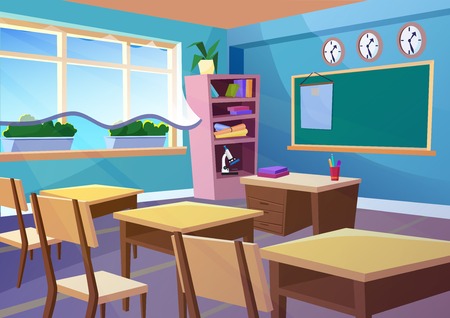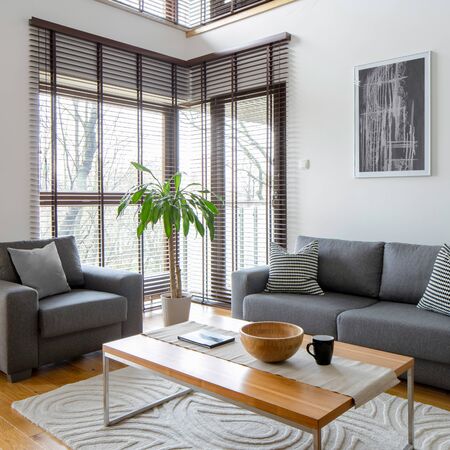Understanding Accessible Living Rooms in the UK
When we talk about accessible living rooms in the UK, it’s more than just adding a ramp or moving a few pieces of furniture. Accessibility is about creating welcoming and functional spaces that everyone—regardless of age or ability—can use comfortably. In Britain, the idea of an inclusive living room is closely linked to both lifestyle and legal standards. The Equality Act 2010 sets out clear expectations for reasonable adjustments in homes, especially where people with disabilities are concerned. However, many British homes—especially older terraced houses and period properties—present unique barriers like narrow doorways, split-level floors, and limited turning circles. These features, while charming, can make everyday life difficult for people using wheelchairs, walking aids, or even for parents with prams. Understanding these challenges is the first step towards designing living rooms that truly include everyone. Whether you’re planning a full renovation or making small tweaks, knowing the local context helps guide practical decisions that lead to an inviting space for all generations and abilities.
2. Practical Layout Tips for Every Age and Ability
Designing an accessible living room isn’t just about aesthetics—it’s about creating a space where everyone, from young children to elderly family members, can move freely and comfortably. Here are some practical tips for arranging your living room furniture to optimise both movement and comfort for all ages and abilities.
Prioritise Clear Pathways
Ensure there are wide, unobstructed walkways throughout the living room. This makes it easier for people with mobility aids, pushchairs, or simply wobbly steps to navigate the space confidently. Aim for at least 90cm (about 3 feet) of clearance in main walkways.
Recommended Pathway Widths by User
| User Group | Minimum Pathway Width | Considerations |
|---|---|---|
| Children | 60–75 cm | Safe corners, rounded edges on furniture |
| Adults | 75–90 cm | Avoid clutter, keep surfaces clear |
| Elderly & Mobility Aid Users | 90 cm or more | No loose rugs, stable handholds nearby |
Select Multi-Functional and Easy-to-Move Furniture
Choose lightweight chairs, footstools with storage, or modular sofas that can be rearranged easily. This flexibility allows you to adapt the space as needs change—perhaps making room for play during the day and relaxing in the evening.
Create Zoned Areas for Different Activities
Arrange furniture to define areas for reading, socialising, or watching telly. Use low shelving or soft rugs to subtly mark these zones without blocking sightlines or creating tripping hazards.
Sample Living Room Zones and Features
| Zone | Main Features | Accessibility Tips |
|---|---|---|
| Reading Nook | Comfy chair, good lighting, small table | Place close to main pathway; ensure easy access to light switches |
| TV Area | Sofa facing telly, remote within reach, footrest optional | Allow space around sofa for walking aids; avoid trailing cables |
| Toy/Play Area (if needed) | Soft rug, open storage baskets, floor cushions | No sharp edges; storage at child-friendly height; keep clear when not in use |
Add Thoughtful Touches for Daily Comfort
Keep essentials like remotes, books, or reading glasses within arm’s reach. Position lamps so switches are easy to operate from a seated position. For those with reduced dexterity, consider lever-style handles or smart plugs that work with voice commands.

3. Choosing Inclusive Furniture and Materials
When planning an accessible living room, the furniture you select sets the tone for comfort and inclusivity. It’s not just about aesthetics; it’s about creating a space that feels safe, welcoming, and practical for everyone – from children to elderly relatives, and those with mobility challenges. Let’s break down how to choose seating, tables, and materials that cater to diverse needs while keeping a distinctly British touch.
Seating: Supportive and Adaptable
Opt for sofas and armchairs with firm seat cushions and sturdy armrests. These features make standing up or sitting down much easier for people with reduced strength or balance. Recliner chairs with electric controls are increasingly popular in UK homes, offering tailored support at the touch of a button. Consider modular sofas that can be rearranged to create extra space for wheelchairs or walking frames when needed. If you’re choosing upholstery, go for durable, easy-clean fabrics such as treated cotton blends or wool — both widely available from UK suppliers.
Tables: Practical Heights and Rounded Edges
Coffee tables and side tables should ideally be at a height that’s easy to reach from a seated position — generally around 45-50cm high. Look for designs with rounded corners to minimise the risk of bumps and bruises, especially in households with children or visually impaired residents. Nesting tables are a great British favourite; they tuck away neatly but can be brought out for extra surface space when visitors pop round.
Materials: Safety First, Locally Sourced
Prioritise non-slip surfaces for rugs and flooring around your furniture. Many UK retailers offer anti-slip underlays that prevent trips and falls — a small investment for peace of mind. For wood finishes on tables or shelves, opt for sustainably sourced British oak or ash where possible; these not only look timeless but also support local craftsmanship. Avoid glass-topped furniture unless it’s toughened safety glass clearly marked to British Standards (BS EN 12150).
Easy Maintenance is Key
Choose wipeable surfaces that can handle spills from tea or muddy pawprints after a walk on the common. Removable cushion covers and machine-washable throws are practical choices that keep your living room fresh without fuss.
Inclusive Design is Thoughtful Design
Above all, inclusive furniture choices show care for everyone who steps into your home. By focusing on safety, ease of use, and sourcing quality materials locally in the UK, you’ll create a living room layout that truly welcomes all ages and abilities — blending comfort with everyday practicality.
4. Lighting and Sensory Considerations
Creating an accessible living room goes beyond just physical space; lighting, colour choices, and textures play a key role in ensuring comfort for everyone, especially those with sensory sensitivities. In the UK, where natural daylight can be limited during certain months, balancing both natural and artificial lighting becomes essential to maintain a cheerful, welcoming atmosphere.
Maximising Natural Light
Position seating areas near windows to benefit from as much daylight as possible. Use sheer or light-filtering curtains to allow sunlight in while maintaining privacy. For rooms that lack direct sunlight, consider adding mirrors strategically to reflect and amplify available light throughout the space.
Smart Artificial Lighting Choices
Layered lighting is crucial—combine ambient ceiling lights, task lamps for reading corners, and accent lighting to highlight art or shelves. Dimmer switches are especially useful in British homes to adjust brightness according to time of day or activity, helping those who may be sensitive to harsh overhead lights.
| Lighting Type | Function | Sensory-Friendly Tips |
|---|---|---|
| Ambient (Ceiling/Wall Lights) | Main illumination | Choose warm LEDs; avoid flickering bulbs |
| Task (Table/Floor Lamps) | Focused activities like reading | Use adjustable arms; opt for shades that diffuse light softly |
| Accent (Spotlights/Fairy Lights) | Create mood, highlight features | Select gentle hues; keep wiring tidy for safety |
Colours and Textures That Welcome All
Opt for calming, neutral tones—think soft greys, creams, or muted blues—which are staples in many British interiors and help create a restful environment. For individuals with sensory processing needs, avoid high-contrast patterns or overly bright colours that might feel overwhelming. Instead, introduce subtle contrasts through cushions or throws for visual interest without overstimulation.
Tactile Comforts Matter
Select furnishings with smooth finishes and soft fabrics like cotton or wool blends. Avoid scratchy textiles or materials prone to static. Layering textures—such as combining a plush rug with linen curtains—adds depth without cluttering the space.
A Practical Example:
A living room painted in gentle sage green, with a mix of velvet and cotton cushions on an inviting sofa, low-pile carpet underfoot for easy wheelchair navigation, soft lamplight from adjustable floor lamps, and blackout blinds ready for those who need darkness at certain times—this is a truly inclusive British living room setting.
5. Smart Home Tech for Enhanced Accessibility
Creating an accessible living room in the UK is now easier than ever, thanks to a wide range of smart home technologies designed with inclusivity in mind. User-friendly devices are transforming daily life, making it simpler and safer for everyone—regardless of age or ability—to enjoy their living space independently.
Voice-Controlled Assistants
Devices like Amazon Echo and Google Nest Hub are widely available across the UK and can be a real game-changer in accessible living room design. With just a simple voice command, you can control lighting, adjust the thermostat, play music, or even make hands-free calls. This is especially helpful for those with limited mobility or dexterity, as there’s no need to fumble with switches or remotes.
Smart Lighting Solutions
Lighting plays a key role in both safety and comfort. Smart bulbs from brands such as Philips Hue allow users to adjust brightness and colour through an app or voice command. For older adults or anyone with visual impairments, this means better visibility without having to move around unnecessarily. Setting up automated schedules also ensures lights switch on as soon as someone enters the room—no more searching for switches in the dark.
Accessible Entertainment Systems
Modern smart TVs and streaming devices come equipped with accessibility features such as voice guidance, high-contrast menus, and subtitles. These functions ensure that everyone can enjoy their favourite programmes without barriers. Simple remote controls with larger buttons or smartphone integration further reduce complexity for users who may find traditional remotes challenging.
Safety First: Smart Sensors and Alerts
Safety should never be overlooked. Motion sensors, smart smoke alarms, and doorbell cameras (like Ring) provide peace of mind for all residents. They send instant alerts to your phone if anything unusual happens—whether thats a visitor at the door or unexpected movement while youre away. For those who might be hard of hearing, these systems can also flash lights or vibrate devices instead of relying solely on sound.
Adapting for Every Ability
The best part about these tech solutions is how seamlessly they blend into everyday routines. Many products are designed to be plug-and-play, so there’s no need for complicated installations. Whether you’re setting up a new home or retrofitting your current space, these UK-available smart devices make inclusive living practical and stylish—helping everyone feel truly at home.
6. Storage Ideas for Clutter-Free, Safe Spaces
Smart storage is at the heart of an accessible living room. It’s not just about making your space look tidy; it’s also essential for reducing trip hazards and ensuring that everyone, regardless of age or ability, can easily find what they need. Here are some practical, British-inspired storage solutions to help keep everyday essentials organised and within easy reach.
Choose Accessible Furniture
Opt for coffee tables with built-in drawers or shelves to house remote controls, magazines and reading glasses. Sideboards at waist height make it easier for all users to store and retrieve items without unnecessary bending or stretching. Look for furniture with smooth handles or push-to-open mechanisms, which are particularly helpful for those with limited grip strength.
Shelving Solutions
Wall-mounted shelves can be installed at varying heights so that books, family photos, and decorative items are always accessible – just remember to keep heavier items on the lower shelves for safety. Open shelving units provide a clear view of contents, which is ideal for older adults or anyone who may struggle with memory issues.
Multi-Functional Storage
Footstools and benches with hidden compartments offer discreet places to stash throws, children’s toys or games. These dual-purpose pieces save space and reduce visual clutter, all while keeping walkways clear. For smaller sitting rooms typical in British homes, nesting tables that tuck away neatly can free up floor space when not in use.
Keep Pathways Clear
Store baskets or bins beside seating areas to gather newspapers or knitting supplies, but always position them out of main walkways. Avoid placing storage units where they might cause obstruction, especially near doorways or in narrow terraced houses.
Labels and Organisation
Using clear labels on boxes or baskets ensures that everyone knows where things belong—making it easier for children and guests alike to tidy up after themselves. Consistent organisation fosters independence and keeps your living room welcoming for all visitors.
By embracing these clever yet realistic storage ideas, you’ll create a living room that feels open, safe and inclusive—ready for family gatherings, quiet evenings or whatever daily life brings.


